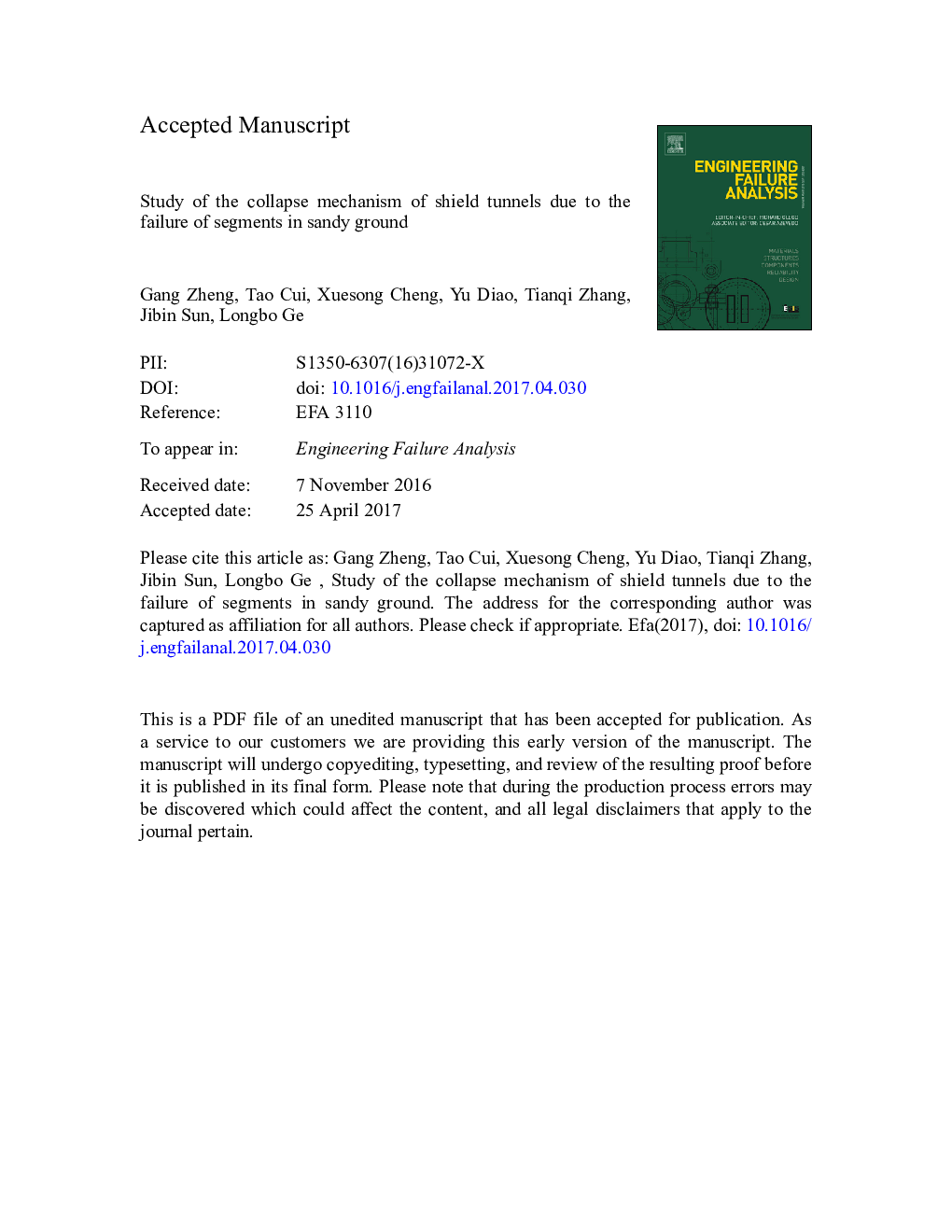| Article ID | Journal | Published Year | Pages | File Type |
|---|---|---|---|---|
| 5013571 | Engineering Failure Analysis | 2017 | 57 Pages |
Abstract
Catastrophic tunnel collapses usually start with the partial failure of tunnel linings. However, research on the mechanism of such progressive collapses is limited. Among such collapses, a considerable number of accidents have arisen from the construction of a connecting passage, which requires removing segments at the springline. Therefore, in this study, a series of customized model tests were conducted to investigate the mechanism underlying tunnel collapse due to this operation. The test results showed that the inrush of the sand due to the removal of a certain segment at the springline may lead to the loss of soil resistance around the openings, resulting in a sudden increase in the bending moments of the adjacent linings. In particular, an increase in the cover-depth-to-diameter ratio (C/D) can aggravate the development of the maximum bending moment, although it has little influence on the affected length of the tunnel. To address the load sustained by the segments and joints during collapse that the model tests fail to show, 3D numerical analyses based on the load-structure model were performed. Via comparison with existing failure criteria for both segments and joints, the safety of the adjacent tunnel linings can be evaluated.
Related Topics
Physical Sciences and Engineering
Engineering
Industrial and Manufacturing Engineering
Authors
Gang Zheng, Tao Cui, Xuesong Cheng, Yu Diao, Tianqi Zhang, Jibin Sun, Longbo Ge,
